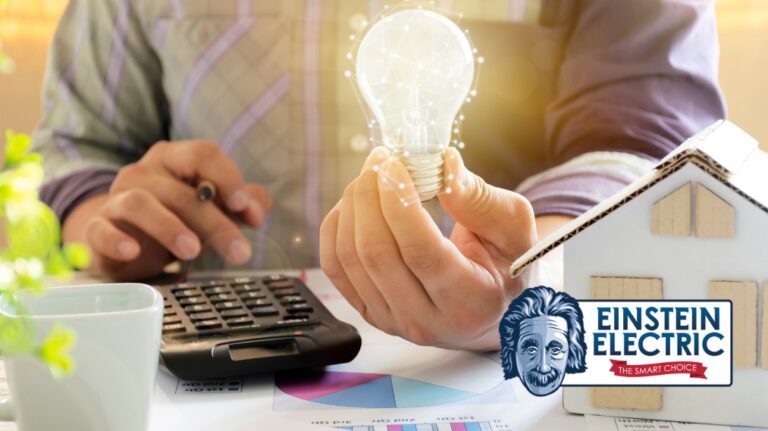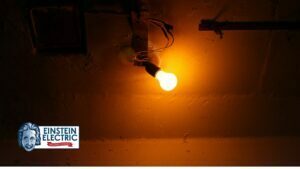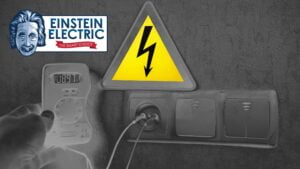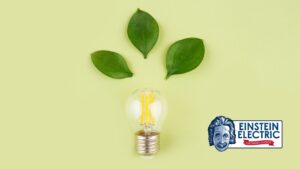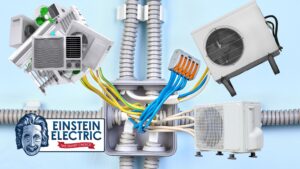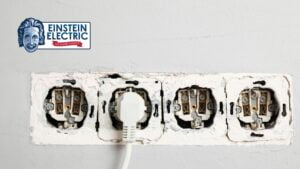Tips for saving energy at home
Saving energy at home is not only good for the environment, but it can also help you save money on your utility bills. Whether you’re looking to reduce your carbon footprint or just want to lower your monthly expenses, there are plenty of ways to save energy at home. In this blog post, we’ll explore some tips for saving energy at home.
- Upgrade Your Light Bulbs
One of the easiest ways to save energy at home is by upgrading your light bulbs. Traditional incandescent bulbs use a lot of energy and have a short lifespan. Consider switching to LED or CFL bulbs, which are more energy-efficient and can last up to 25 times longer than incandescent bulbs.
Upgrading your light bulbs is a simple and effective way to save energy and reduce your electricity bills. LED (Light Emitting Diode) and CFL (Compact Fluorescent Lamp) bulbs are excellent alternatives to traditional incandescent bulbs. Here are some benefits of switching to LED or CFL bulbs:
- Energy Efficiency: LED and CFL bulbs are highly energy-efficient compared to incandescent bulbs. They convert a higher percentage of electricity into light, resulting in less energy waste and lower electricity consumption. LED bulbs, in particular, are extremely efficient and use up to 80% less energy than incandescent bulbs.
- Longer Lifespan: LED and CFL bulbs have significantly longer lifespans than incandescent bulbs. While an incandescent bulb typically lasts around 1,000 hours, LED bulbs can last up to 25,000 hours or more, and CFL bulbs can last up to 10,000 hours. This means you’ll have to replace them less frequently, saving you money on replacements.
- Cost Savings: Although LED and CFL bulbs are initially more expensive than incandescent bulbs, their long lifespan and energy efficiency result in substantial cost savings over time. You’ll see a significant reduction in your electricity bills due to lower energy consumption and fewer replacements.
- Environmental Impact: By using LED or CFL bulbs, you contribute to reducing greenhouse gas emissions and your carbon footprint. These bulbs require less energy to operate, helping to conserve resources and mitigate climate change.
- Versatility: LED and CFL bulbs are available in various shapes, sizes, and color temperatures, allowing you to choose the right lighting for different areas of your home. They can be used in lamps, ceiling fixtures, recessed lighting, and many other applications.
When selecting LED or CFL bulbs, consider factors such as the desired brightness, color temperature (warm or cool white), and compatibility with your fixtures. Additionally, ensure that the bulbs you choose are suitable for the specific purpose or dimming capabilities if necessary.
Overall, upgrading your light bulbs to LED or CFL is a simple yet effective step towards energy conservation, cost savings, and environmental sustainability.
- Use Power Strips
Electronics and appliances can use energy even when they’re turned off. By plugging them into a power strip and turning off the strip when they’re not in use, you can save energy and money. This is especially important for electronics that have standby modes, such as TVs and computers.
Using power strips is a great strategy to save energy and reduce standby power consumption. Here’s how it works and why it’s effective:
- Standby Power Consumption: Many electronic devices consume energy even when they’re turned off or in standby mode. This is often referred to as standby power or vampire power. Standby power allows devices to power up quickly when you turn them on, but it can still consume a significant amount of electricity over time.
- Power Strip Benefits: Plugging your electronics and appliances into a power strip allows you to easily control their power supply. When you turn off the power strip, it cuts off electricity to all the devices connected to it. This eliminates standby power consumption because the devices are completely disconnected from the power source.
- Convenience and Efficiency: Using a power strip makes it more convenient to turn off multiple devices simultaneously. For example, you can plug your TV, DVD player, gaming console, and sound system into a single power strip. With a simple switch or button, you can turn off the entire strip, ensuring that none of these devices consume standby power unnecessarily.
- Energy Savings and Cost Reduction: By using power strips and turning them off when your electronics are not in use, you can achieve significant energy savings. The cumulative effect of eliminating standby power consumption from multiple devices can lead to noticeable reductions in your electricity bills over time.
- Extension of Device Lifespan: Additionally, using power strips can help extend the lifespan of your electronics. Power fluctuations and surges can cause damage to sensitive components. By completely cutting off power through a power strip, you provide an extra layer of protection against electrical issues that could harm your devices.
Remember to use power strips with built-in surge protectors to safeguard your electronics from power surges. Some advanced power strips even come with features like timers or occupancy sensors that automatically cut off power when devices are not in use.
Using power strips to control the power supply to your electronics and appliances is an effective way to eliminate standby power consumption, save energy, reduce your electricity bills, and prolong the lifespan of your devices.
- Adjust Your Thermostat
Your heating and cooling system is one of the biggest consumers of energy in your home. By adjusting your thermostat just a few degrees, you can save a significant amount of energy. During the winter, try setting your thermostat to 68 degrees when you’re home and 60-62 degrees when you’re away. During the summer, set your thermostat to 78 degrees when you’re home and 85 degrees when you’re away.
Here are some tips for optimizing your thermostat settings:
- Winter Settings: During the winter months, setting your thermostat to 68 degrees Fahrenheit (20 degrees Celsius) while you’re at home is a comfortable and energy-efficient temperature. When you’re away or asleep, you can lower the thermostat to around 60-62 degrees Fahrenheit (15-16 degrees Celsius). This allows you to save energy during periods when you don’t require as much heating.
- Summer Settings: In the summer, setting your thermostat to 78 degrees Fahrenheit (25 degrees Celsius) while you’re at home can help keep you cool without excessive energy consumption. When you’re away from home or at night when temperatures are typically cooler, you can raise the thermostat to around 85 degrees Fahrenheit (29 degrees Celsius) to minimize energy usage.
- Programmable Thermostats: Consider upgrading to a programmable thermostat if you don’t have one already. These thermostats allow you to set temperature schedules based on your daily routines. You can program them to automatically adjust the temperature according to your preferences, saving energy when you’re away and ensuring comfort when you’re at home.
- Smart Thermostats: Smart thermostats take energy efficiency to the next level. They can learn your preferences, adapt to your schedule, and even be controlled remotely via smartphone apps. Some models also provide energy usage insights and recommendations, helping you optimize your heating and cooling settings for maximum efficiency.
- Zone Heating and Cooling: If you have a larger home or multiple floors, consider utilizing zone heating and cooling. This allows you to set different temperatures for specific areas or zones in your home, ensuring that you’re not wasting energy on heating or cooling areas that are unoccupied or don’t require as much conditioning.
Remember, every degree of adjustment can make a difference in energy savings. If you find the suggested temperature settings uncomfortable, feel free to make slight adjustments based on your personal comfort preferences. The goal is to find a balance between energy conservation and maintaining a comfortable living environment.
By adjusting your thermostat settings wisely and using programmable or smart thermostats, you can optimize your heating and cooling system, reduce energy consumption, and save on your utility bills while still ensuring your comfort.
- Insulate Your Home
Proper insulation can help keep your home warm in the winter and cool in the summer, reducing the workload on your heating and cooling system. Inspect your attic, walls, and floors to ensure that your home is well-insulated. Consider adding weatherstripping to doors and windows to prevent drafts.
Here are some key areas to focus on when it comes to insulation:
- Attic Insulation: The attic is a primary area of heat loss in many homes. Ensure that your attic is adequately insulated to prevent warm air from escaping during the winter and hot air from entering during the summer. Common types of insulation for attics include fiberglass batts, blown-in cellulose, or spray foam insulation.
- Wall Insulation: Depending on the age and construction of your home, you may need to consider insulating the walls. This can be more challenging as it often requires professional installation, especially for existing walls. However, if you’re renovating or remodeling, it presents an opportunity to add insulation to the walls.
- Floor Insulation: If you have a basement or crawl space, insulating the floors above can help reduce heat loss. It’s particularly important in areas with cold winters. Insulating the floor can also improve comfort and reduce energy costs.
- Weatherstripping: Adding weatherstripping to doors and windows is an effective way to prevent drafts and air leaks. Weatherstripping materials, such as adhesive-backed foam tape, door sweeps, or caulking, can seal gaps and cracks around doors and windows, reducing heat transfer and improving energy efficiency.
- Insulated Doors and Windows: Consider upgrading to insulated doors and windows, which have improved thermal performance compared to single-pane or older models. These energy-efficient options can help reduce heat gain or loss and improve overall insulation in your home.
- Sealing Air Leaks: Identify and seal any air leaks throughout your home, including gaps around pipes, vents, electrical outlets, and recessed lighting fixtures. Sealing these leaks with caulk, expanding foam, or weatherstripping can prevent unwanted air exchange and improve energy efficiency.
Proper insulation not only helps in reducing energy consumption and saving on heating and cooling costs but also enhances the comfort of your living spaces. It’s advisable to consult with professionals or conduct a home energy audit to determine the most suitable insulation options for your specific needs.
By insulating your home effectively and addressing air leaks, you create a more energy-efficient and comfortable living environment while reducing your carbon footprint.
- Use Energy-Efficient Appliances
When shopping for new appliances, look for models that are ENERGY STAR certified. These appliances are designed to use less energy than traditional models, which can save you money on your utility bills.
Here’s how ENERGY STAR certified appliances can benefit you:
- Energy Efficiency: ENERGY STAR is a program backed by the U.S. Environmental Protection Agency (EPA) that identifies and promotes energy-efficient products. Appliances with the ENERGY STAR label meet strict energy efficiency guidelines set by the EPA. These appliances use less energy compared to standard models without sacrificing performance.
- Lower Energy Consumption: ENERGY STAR appliances, such as refrigerators, dishwashers, washing machines, and air conditioners, are designed to operate more efficiently, reducing the amount of electricity they consume. This can lead to significant energy savings over the lifespan of the appliance, resulting in lower utility bills.
- Cost Savings: While energy-efficient appliances may have a slightly higher upfront cost, the long-term savings in energy consumption can offset the initial investment. Lower energy bills over the life of the appliance can result in substantial cost savings, making energy-efficient models a financially wise choice.
- Environmental Benefits: By using energy-efficient appliances, you contribute to reducing greenhouse gas emissions and minimizing your carbon footprint. These appliances help conserve energy resources and contribute to a more sustainable and environmentally friendly future.
- Wide Range of Options: ENERGY STAR offers a wide range of certified appliances, including refrigerators, freezers, dishwashers, washing machines, dryers, air conditioners, furnaces, water heaters, and more. You have plenty of choices when it comes to finding energy-efficient appliances that meet your specific needs.
When shopping for appliances, look for the ENERGY STAR label and compare the energy consumption information provided on the product’s Energy Guide label. This information helps you understand the estimated energy usage and operating costs of the appliance.
It’s worth noting that energy-efficient practices extend beyond appliances. Utilizing other energy-saving strategies such as proper maintenance, smart usage habits, and reducing standby power can further enhance your energy efficiency efforts.
By choosing ENERGY STAR certified appliances, you can enjoy the benefits of lower energy consumption, cost savings, and a reduced environmental impact.
- Wash Clothes in Cold Water
Washing your clothes in cold water instead of hot water can save a significant amount of energy. Most of the energy used in washing machines goes towards heating the water. By washing your clothes in cold water, you can save energy and still get your clothes clean.
Washing your clothes in cold water is a simple yet effective way to save energy and reduce your carbon footprint. Here’s why washing in cold water is beneficial:
- Energy Savings: Heating water accounts for a significant portion of energy consumption in washing machines. By using cold water, you eliminate the need to heat the water, resulting in immediate energy savings. In fact, about 90% of the energy used in a typical laundry cycle is attributed to water heating.
- Environmental Impact: By reducing your energy consumption, you contribute to lowering greenhouse gas emissions associated with electricity generation. This helps combat climate change and promotes a more sustainable future.
- Fabric Protection: Washing clothes in cold water is gentler on fabrics compared to hot water. Heat can cause certain fabrics to shrink, fade, or lose their shape. Cold water washing helps preserve the color, quality, and lifespan of your clothes.
- Versatility: Modern laundry detergents are formulated to be effective in cold water. They contain enzymes and surfactants that can break down dirt and stains even without the use of hot water. This means you can achieve clean and fresh-smelling clothes using cold water in most instances.
- Cost Savings: Washing clothes in cold water can also result in cost savings on your utility bills. Since hot water heating requires energy, washing in cold water reduces the energy consumed per laundry cycle, leading to lower electricity or gas costs.
While cold water is suitable for most everyday laundry loads, there may be exceptions. Certain types of heavily soiled items, like stained bedding or greasy garments, may require warmer water or spot treatment. Additionally, always follow garment care labels and guidelines for specific fabric recommendations.
To enhance the effectiveness of cold water washing, consider the following tips:
- Use an energy-efficient washing machine that is designed to perform well with cold water settings.
- Choose a high-quality detergent that is formulated for cold water washing.
- Pre-treat stains or heavily soiled areas before washing.
- Opt for shorter wash cycles, as cold water may require slightly longer washing times compared to hot water.
- By making the switch to cold water washing, you can enjoy the benefits of energy savings, environmental responsibility, fabric care, and potential cost reductions, all while maintaining clean and fresh laundry.
- Use a Clothesline
Using a clothesline to dry your clothes instead of a dryer can also save energy. Clothes dryers are one of the biggest consumers of energy in a home. By using a clothesline, you can save energy and money.
Here are the advantages of using a clothesline:
- Energy Savings: Clothes dryers consume a significant amount of energy, primarily in the form of electricity or gas, to operate. By using a clothesline, you eliminate the need for this energy-intensive appliance altogether, resulting in substantial energy savings.
- Cost Reduction: When you rely on a clothesline instead of a dryer, you can significantly reduce your utility bills. The savings may vary depending on your location, energy rates, and frequency of laundry, but air-drying your clothes is a cost-effective alternative.
- Environmental Benefits: By eliminating or reducing the use of a clothes dryer, you contribute to reducing greenhouse gas emissions and environmental impact associated with electricity or gas consumption. Air-drying your clothes is a sustainable choice that supports a greener lifestyle.
- Gentle on Fabrics: Clothes dryers can subject your clothes to high heat and tumbling, which may contribute to wear and tear over time. Air-drying is gentler on fabrics, helping to preserve their quality, color, and shape for longer.
- Fresh Air and Sunshine: Hanging clothes outside on a clothesline allows them to soak up the natural freshness of the air and the pleasant scent of sunshine. This can add a delightful natural fragrance to your laundry that cannot be replicated by a dryer.
- Versatility and Convenience: Clotheslines come in various types, including outdoor clotheslines, retractable clotheslines, and indoor drying racks. Choose an option that suits your living situation and preferences. If outdoor drying is not feasible, you can still use an indoor clothesline or drying rack in well-ventilated areas like laundry rooms or balconies.
- Physical Activity and Connection with Nature: Hanging laundry on a clothesline can also be an opportunity to engage in light physical activity and spend some time outdoors. It can be a meditative and calming activity, allowing you to connect with nature and enjoy the simplicity of everyday tasks.
It’s important to note that certain types of clothing or delicate items may require special care and should not be air-dried, such as certain knits, lingerie, or items prone to stretching. Always follow garment care labels and guidelines to ensure appropriate drying methods.
By embracing the use of a clothesline, you can embrace energy efficiency, save money, enjoy the fresh scent of air-dried laundry, and make a positive impact on the environment.
- Seal Air Leaks
Air leaks in your home can cause drafts, making it harder to heat or cool your home. Inspect your home for air leaks around windows, doors, and electrical outlets. Use caulk or weatherstripping to seal any leaks you find.
Here’s how you can effectively seal air leaks:
- Identify Air Leak Locations: Perform a thorough inspection of your home to locate potential air leak sources. Common areas where air leaks occur include windows, doors, electrical outlets, switch plates, baseboards, attic hatches, recessed lighting fixtures, and plumbing penetrations. Look for any gaps, cracks, or spaces where air could be escaping or entering.
- Weatherstripping: Weatherstripping is an effective way to seal gaps around windows and doors. Install weatherstripping along the edges of doors and the frames of windows to create a tight seal. There are different types of weatherstripping materials available, including adhesive-backed foam tape, V-strip, door sweeps, and door shoe sweeps. Choose the appropriate type based on the location and size of the gap.
- Caulking: Use caulk to seal gaps and cracks around stationary components such as window frames, door frames, and electrical outlets. Apply caulk along the edges where different materials meet, such as between the wall and baseboards. Silicone or latex-based caulk is commonly used for sealing interior gaps, while exterior-grade caulk is suitable for outdoor applications.
- Insulation: Proper insulation not only helps with temperature control but also aids in reducing air leaks. Insulate areas like the attic, walls, and floors to minimize heat transfer and maintain a more consistent indoor temperature.
- Outlet and Switch Plate Insulation: Electrical outlets and switch plates can be sources of air leakage. Install foam gaskets or insulation pads behind the outlet and switch plates to create a seal and prevent air leaks.
- Air Duct Sealing: If your home has a forced-air heating or cooling system, inspect the air ducts for leaks. Seal any leaks using mastic sealant or metal tape specifically designed for HVAC systems. This helps ensure that conditioned air reaches its intended destination instead of escaping through leaks in the ductwork.
- Professional Assistance: If you’re unsure about identifying or sealing air leaks, consider hiring a professional energy auditor or contractor who can conduct a comprehensive assessment of your home’s energy efficiency and recommend appropriate solutions.
Sealing air leaks helps to improve energy efficiency, reduce drafts, and enhance overall comfort in your home. It not only conserves energy but also reduces your heating and cooling costs. By implementing these measures, you’ll create a more efficient and comfortable living space while reducing your environmental impact.
- Unplug Chargers
Chargers for phones, tablets, and other electronics continue to use energy even when they’re not charging. Unplug them when they’re not in use to save energy.
Here’s why you should unplug chargers:
- Standby Power Consumption: Chargers, even when not actively charging a device, continue to draw a small amount of energy when plugged into an outlet. This is commonly referred to as “standby power” or “vampire power.” Unplugging chargers eliminates this standby power consumption and reduces unnecessary energy waste.
- Cumulative Energy Savings: While the energy consumed by a single charger may seem negligible, the cumulative effect of multiple chargers left plugged in over time can add up. By unplugging them, you prevent this wasted energy and contribute to overall energy conservation.
- Cost Savings: Unplugging chargers not only saves energy but also translates into cost savings on your utility bills. Though the amount saved may vary depending on the number of chargers and your electricity rates, every little bit counts towards reducing your monthly expenses.
- Environmental Impact: By unplugging chargers, you reduce the demand for electricity generation, which can have a positive impact on the environment. Power plants that generate electricity may rely on non-renewable resources or emit greenhouse gases during operation. Decreasing energy consumption helps lower your carbon footprint and supports a more sustainable future.
- Convenient Alternative: If unplugging chargers seems inconvenient or you’re concerned about forgetting to plug them back in when needed, you can also use power strips with an on/off switch. By plugging your chargers into the power strip, you can easily turn off the entire strip when the chargers are not in use, effectively cutting off power to all connected devices.
Remember that chargers are not the only electronics that consume standby power. Other devices like televisions, gaming consoles, printers, and audio systems may also draw power when not in active use. It’s a good practice to unplug or use power strips with on/off switches for these devices as well.
By making a habit of unplugging chargers when not in use or using power strips, you can save energy, reduce standby power consumption, and contribute to a more sustainable and efficient use of resources.
- Plant Trees
Planting trees around your home can help provide shade in the summer, reducing the workload on your cooling system. In the winter, trees can act as a windbreak, reducing the amount of cold air that enters your home.
Here are some ways in which trees contribute to reducing the workload on your cooling system:
- Natural Shade: Trees with wide canopies can create a natural shade barrier that blocks direct sunlight from reaching your home. This helps to keep the surrounding area cooler and reduces the amount of heat that enters your home through windows, walls, and the roof.
- Evaporative Cooling: Trees release moisture through a process called transpiration. This evaporation of water from the leaves creates a cooling effect in the surrounding air. As a result, the immediate vicinity of the trees feels cooler, including the areas near your home.
- Reduced Air Conditioning Needs: By providing shade and evaporative cooling, trees can help lower the temperature around your home. This, in turn, reduces the need for artificial cooling through air conditioners or fans. As a result, your cooling system doesn’t have to work as hard, leading to energy savings and lower electricity bills.
- Decreased Heat Island Effect: Urban areas often experience the “heat island” effect, where buildings, roads, and concrete surfaces absorb and radiate heat, making the area hotter. Planting trees helps mitigate this effect by providing shade, reducing surface temperatures, and creating a more pleasant microclimate.
When selecting trees for shade, consider their growth potential, canopy size, and the orientation of your home. Deciduous trees (those that shed leaves in winter) are particularly beneficial, as they allow sunlight to reach your home during the colder months when you may want some additional warmth.
Remember to give the trees enough space to grow and consider their proximity to utility lines, structures, and other plants. Regular maintenance, such as pruning to maintain the desired shape and removing dead branches, will help ensure healthy tree growth and longevity.
Overall, planting trees for shade not only reduces the workload on your cooling system but also adds beauty to your surroundings and provides numerous environmental benefits.
In conclusion, there are many ways to save energy at home, from upgrading your light bulbs to planting trees. By making small changes to your daily routine and taking steps to make your home more energy-efficient, you can save money on your utility bills and reduce your carbon footprint. Start implementing these tips today to start saving energy at home.

